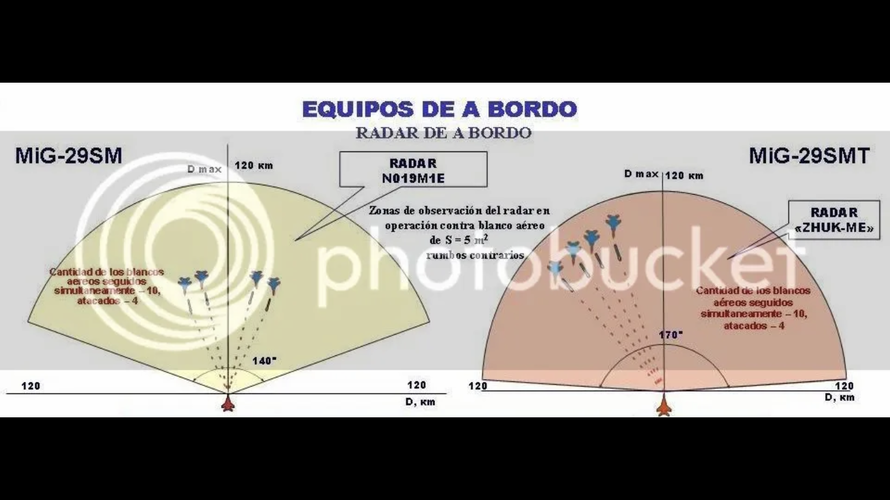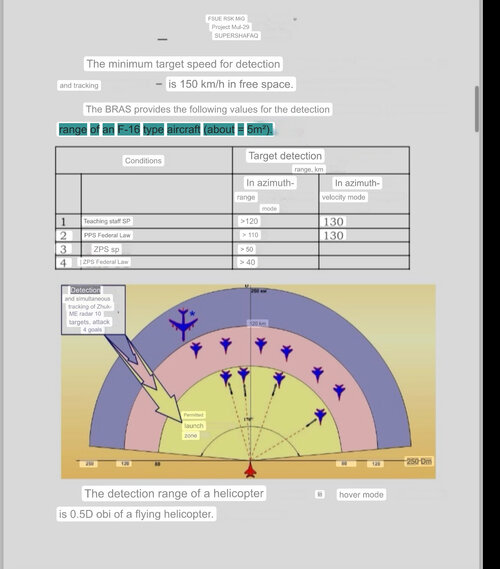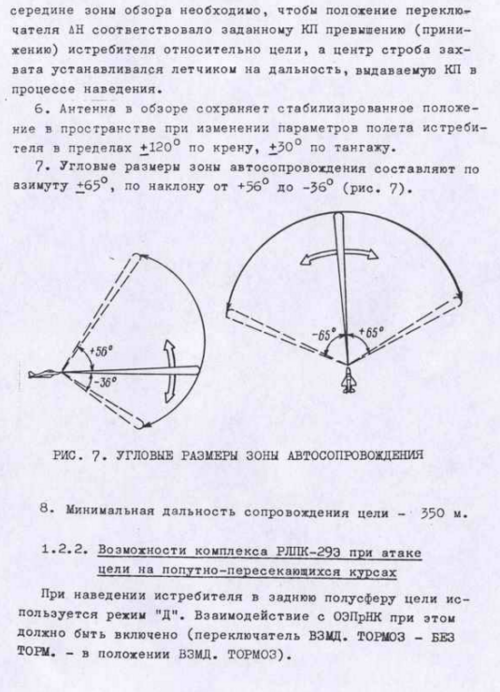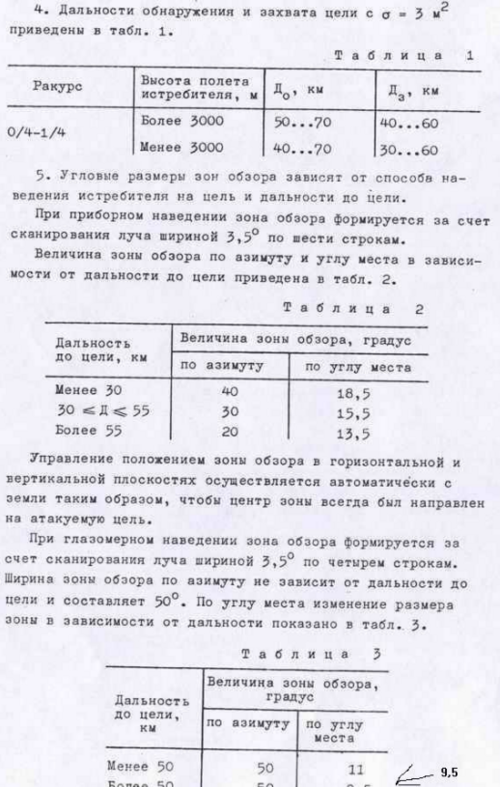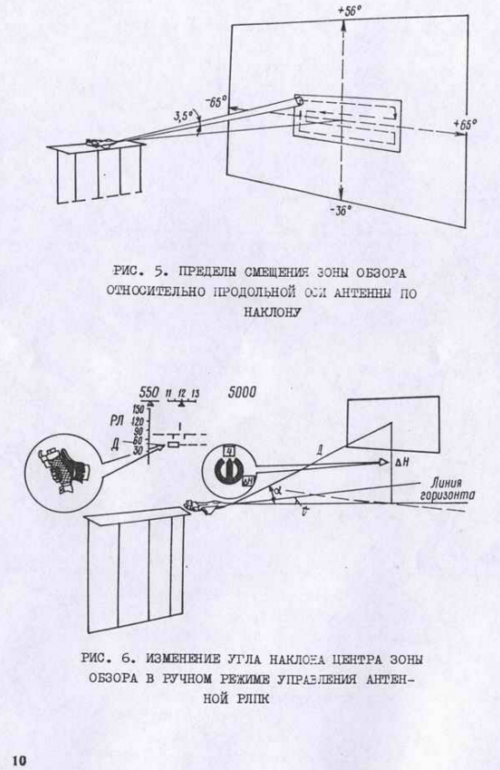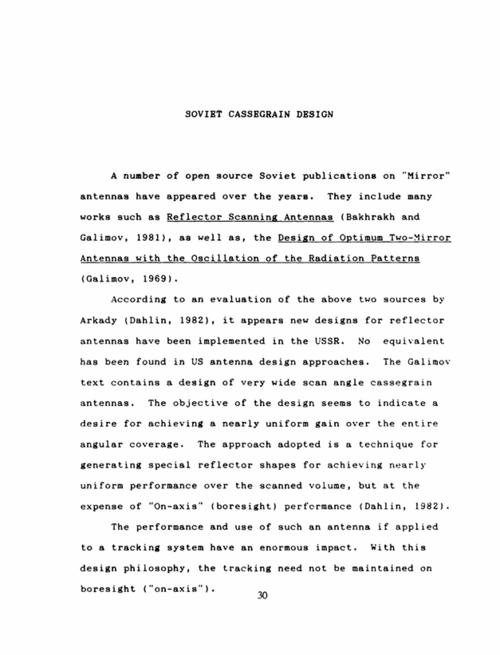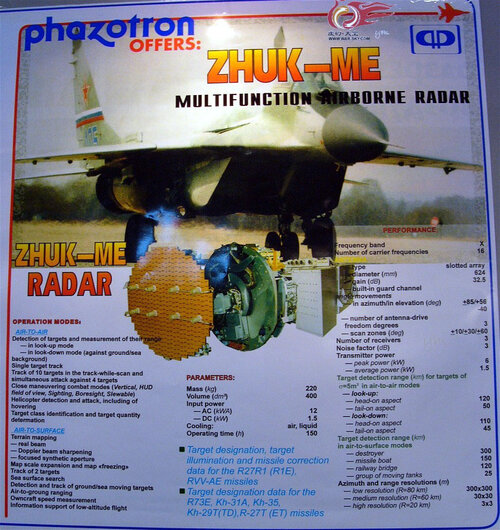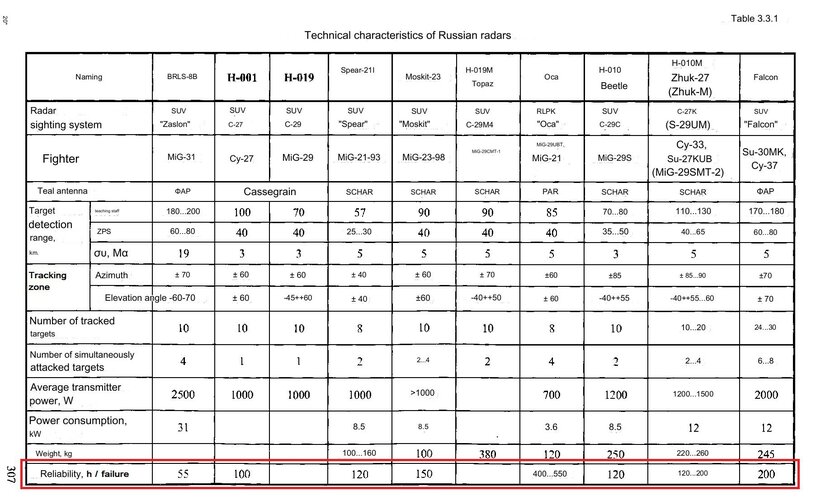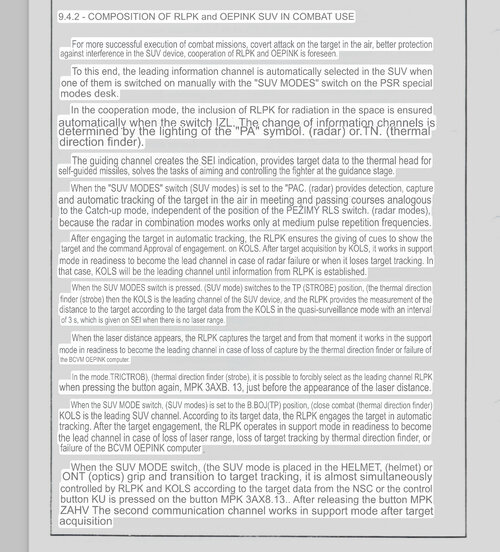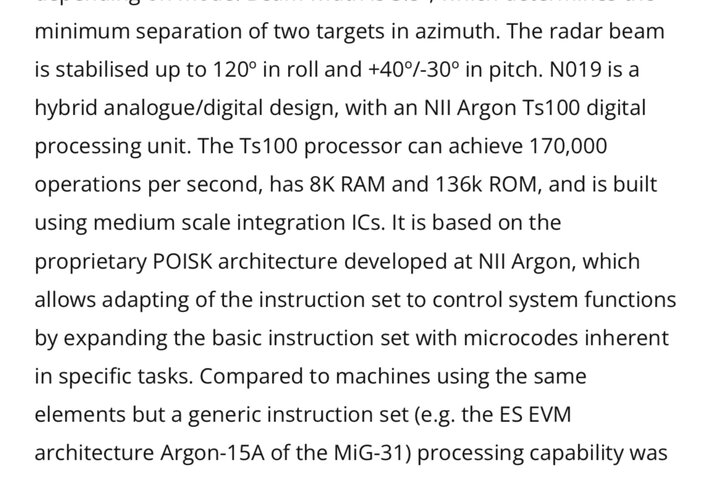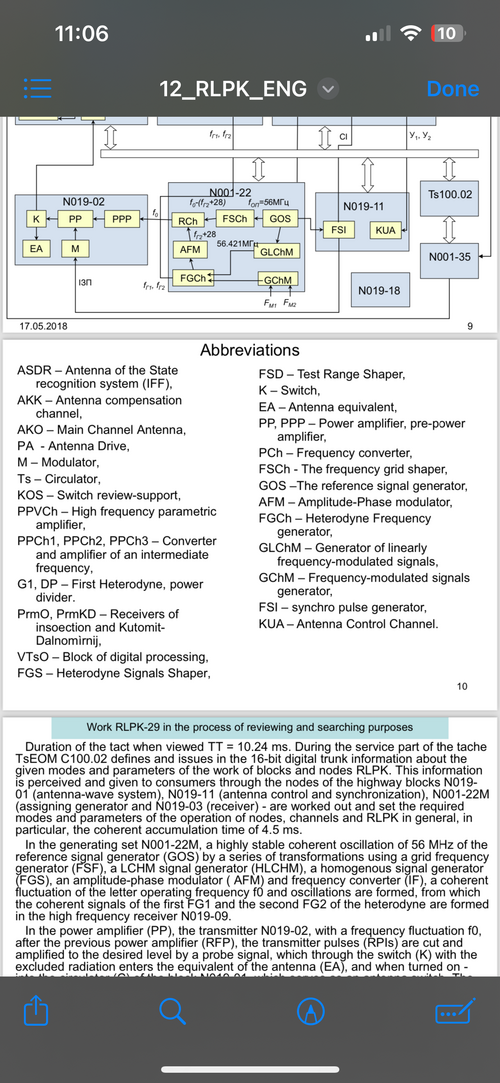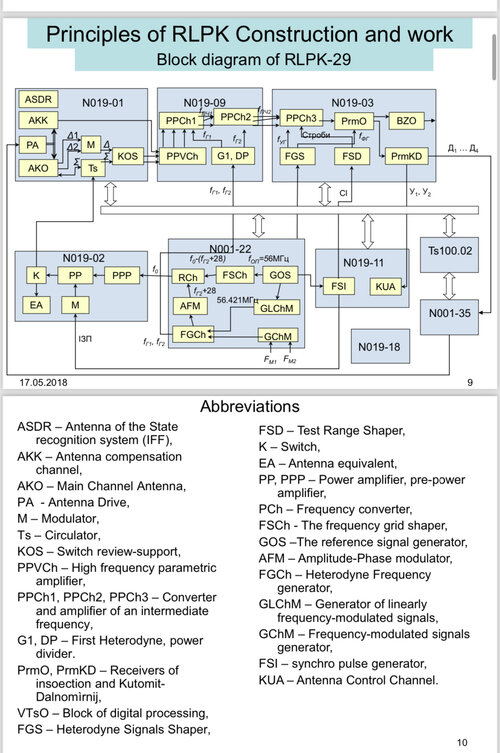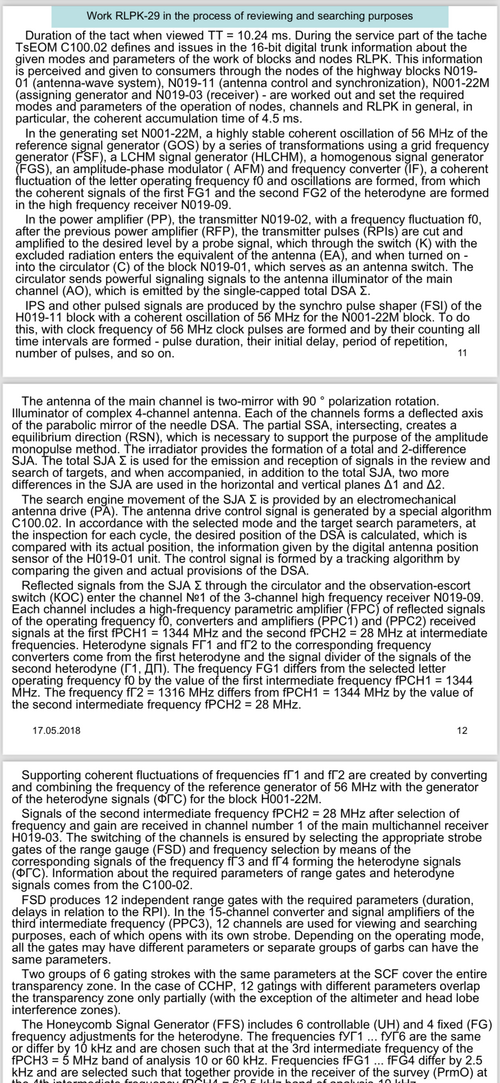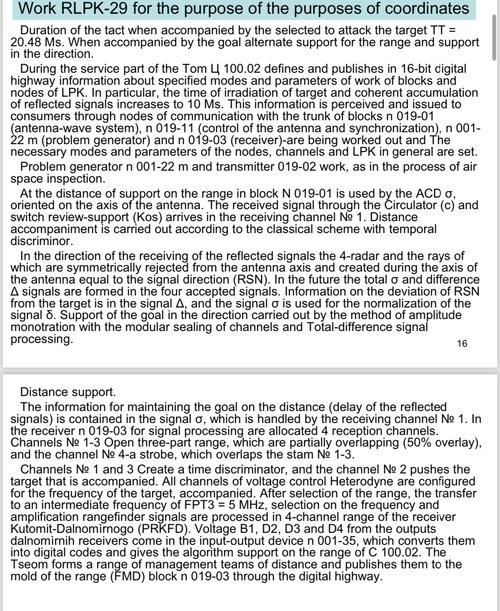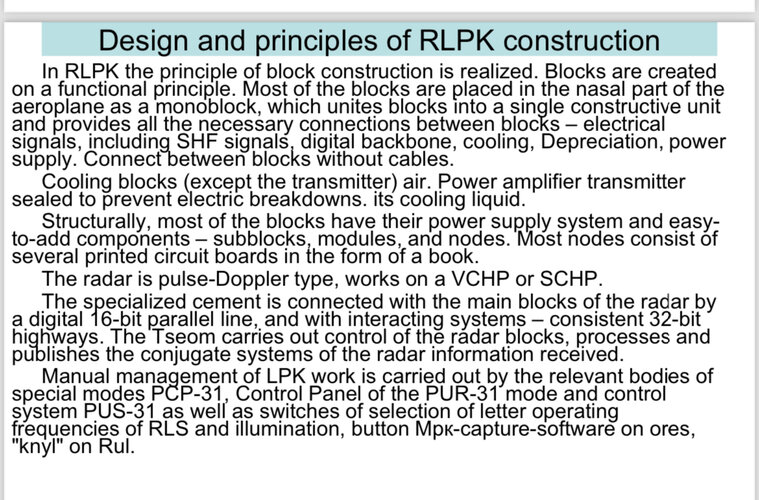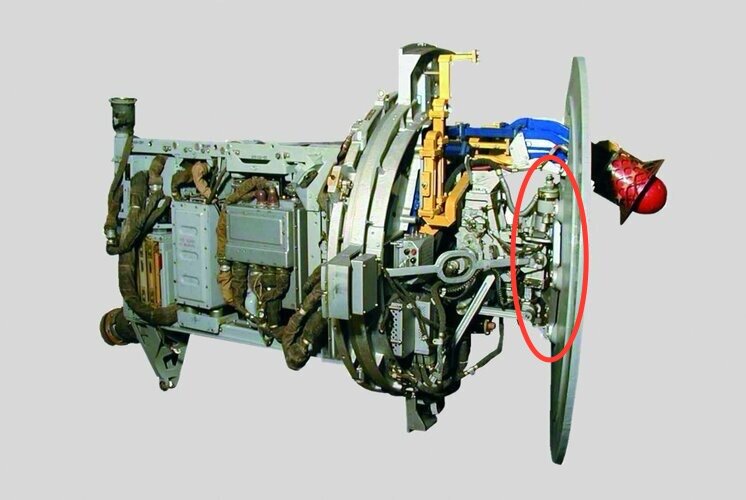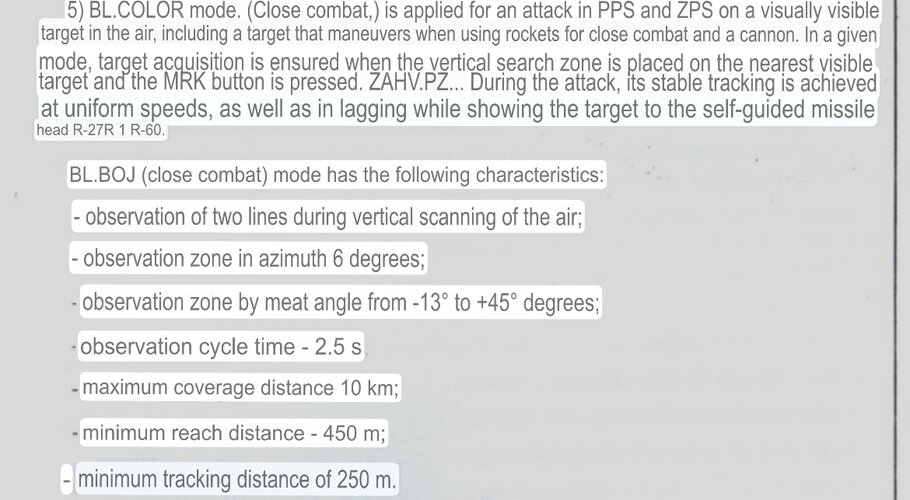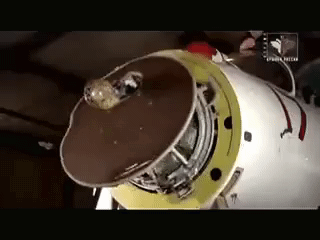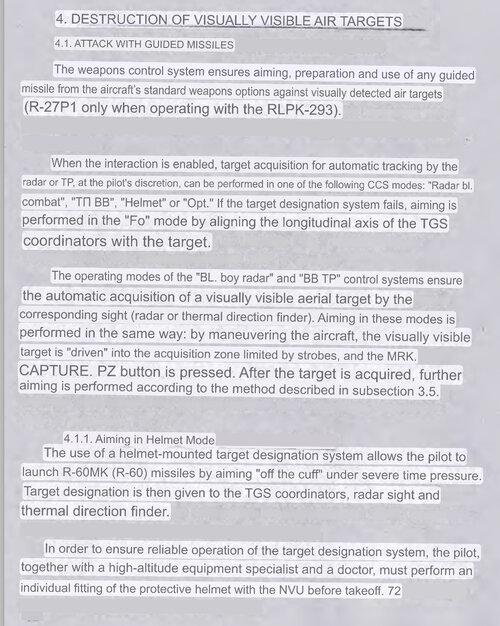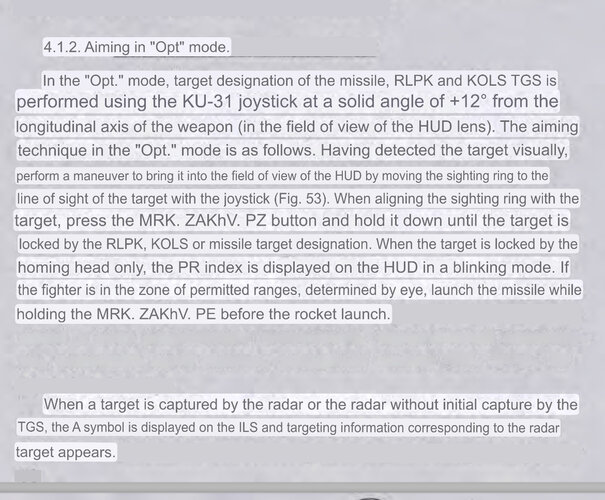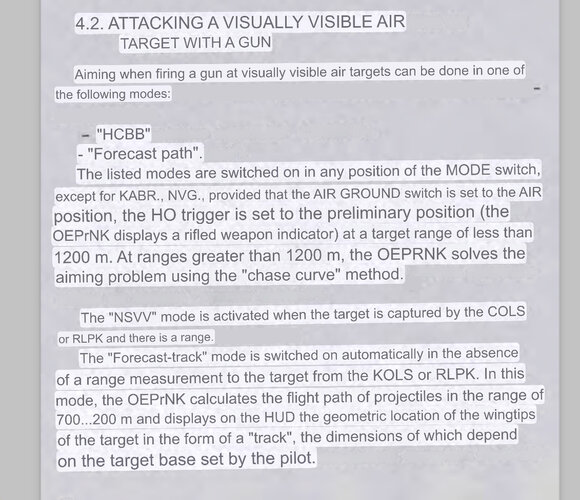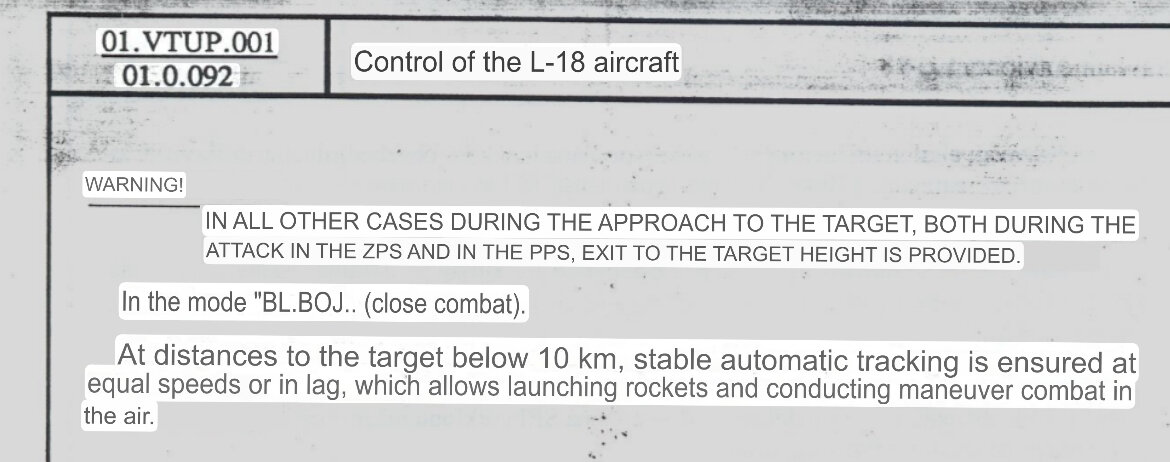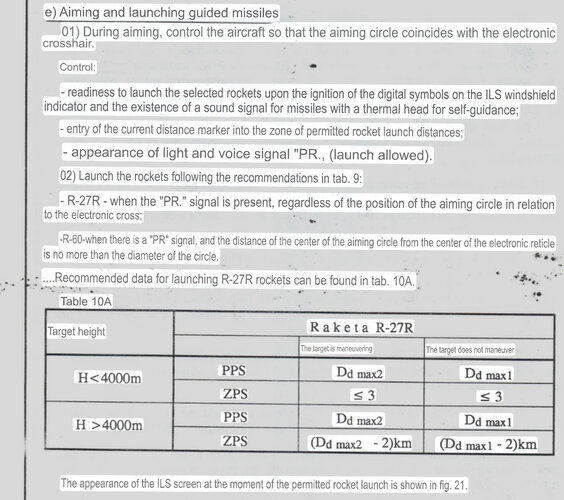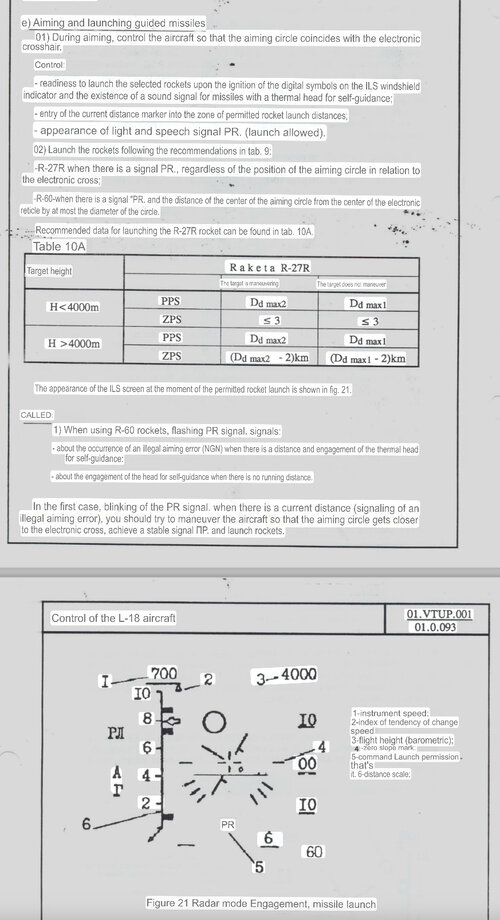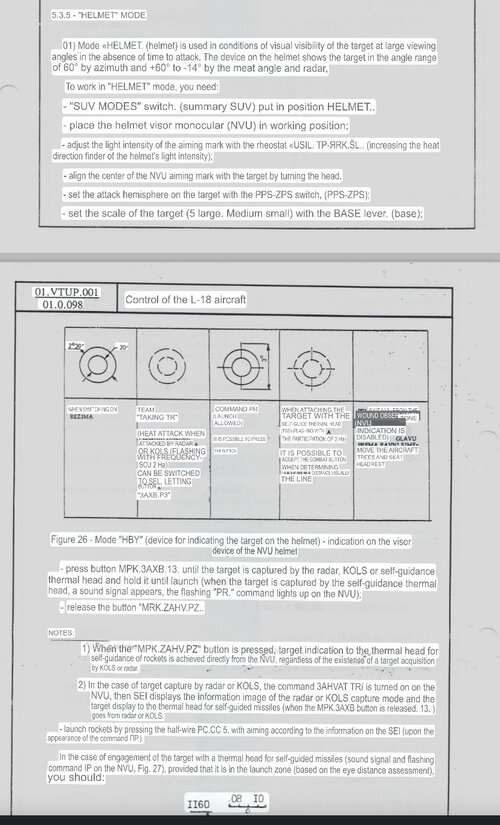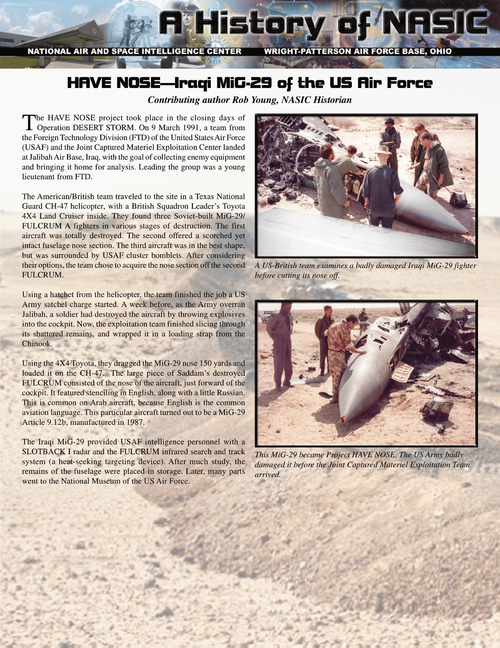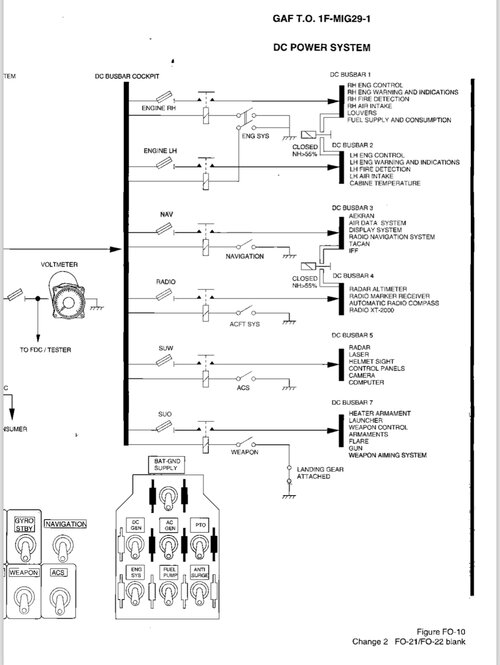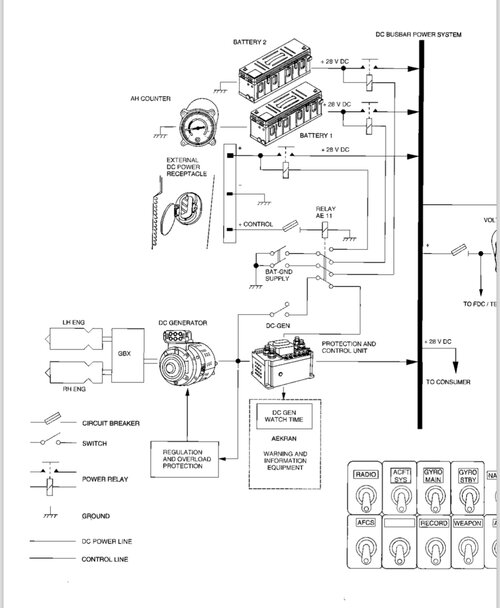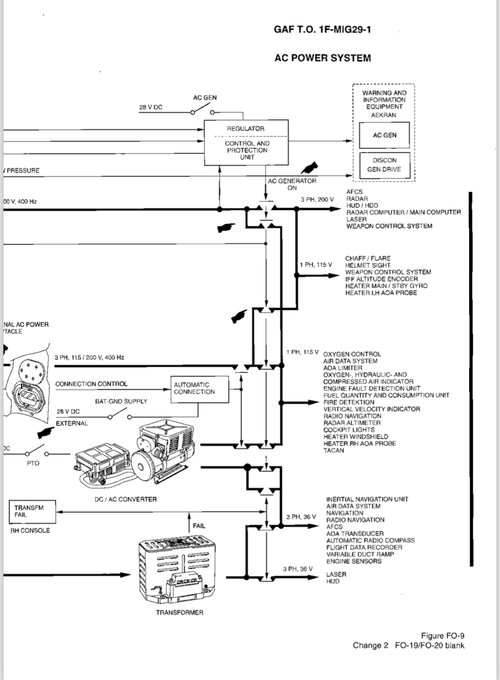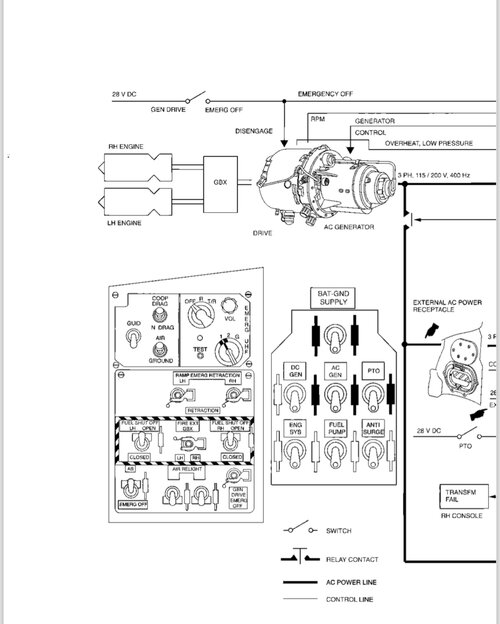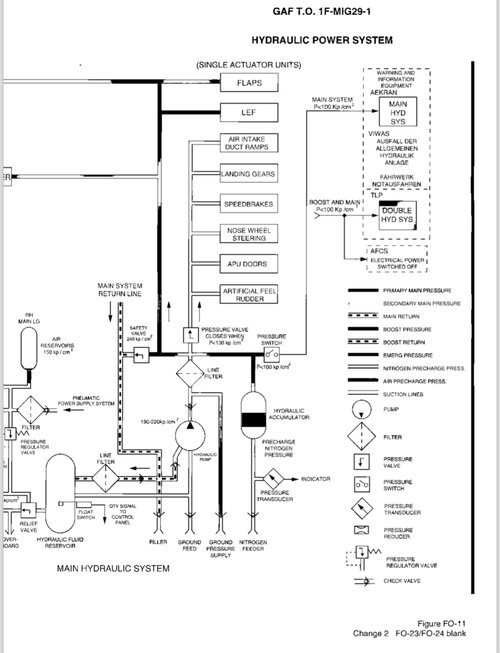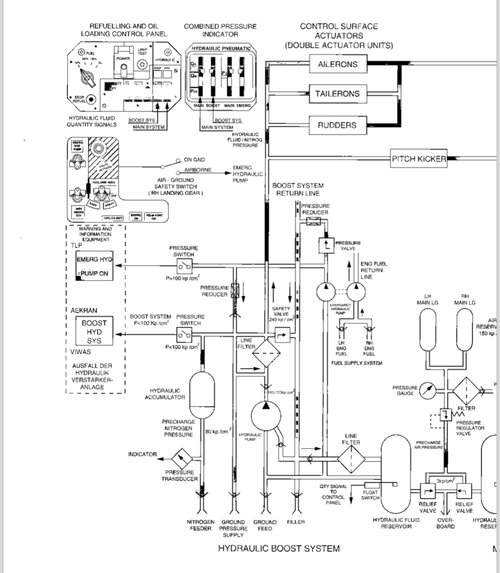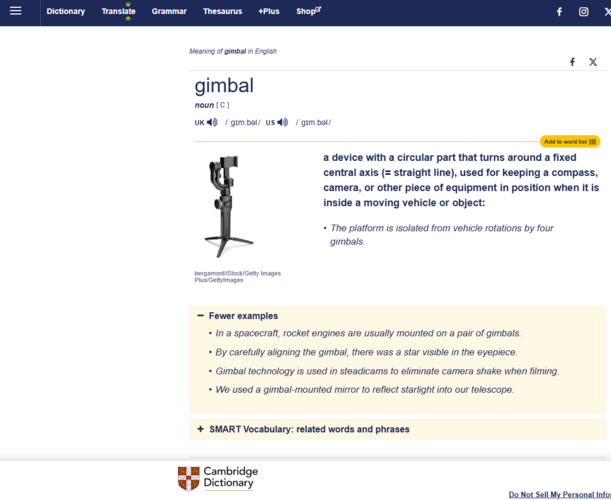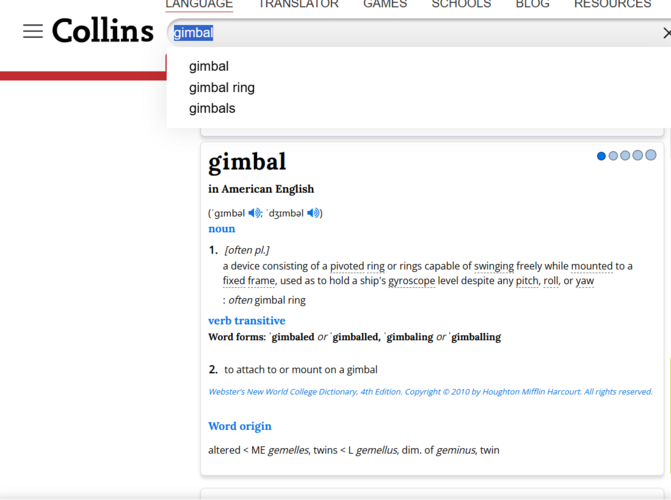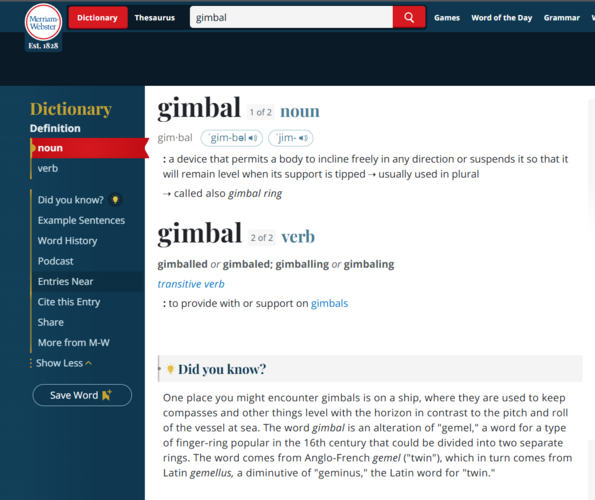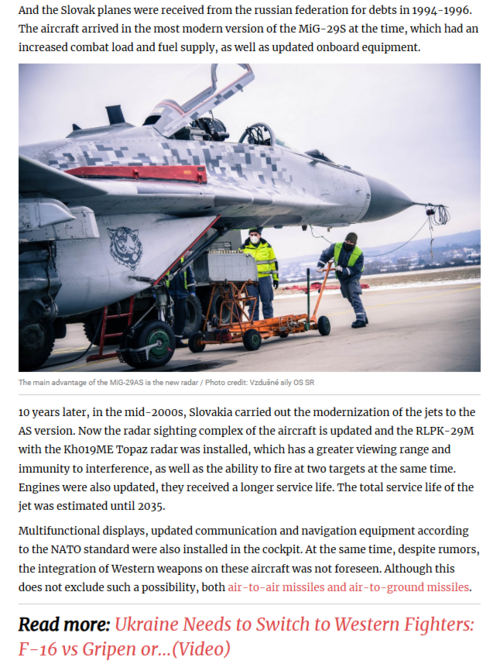What is in correct? You seem to agree and say so yourself that in search mode, the maximum azimuth in search is 65 degrees, and in STT track, the lock can be maintained up to 70 degrees azimuth
No. I do not agree, I thought I made myself clear.
I will repeat myself again. I have no issue with that.
The
maximum tracking zone performance for the N019 Rubin is long established at azimuth 65° @ +56°/ -36 elevation.
This is stated verbatim in the Russian language in the soviet Mig-29 product index 9-12 operations manual. It is repeated several times and depicted in drawing several times as well.
This manual I referred to is in regard to the
first serial production line of the MiG-29 that ran for about 4 years before being completely phased out by product index 9-12A & 9-13. Anyone who understands the aircraft's history & design can
easily identify this by simply reading the manual.
Since you have the weapon employment manual it should be clear, whatever the radar is doing inside, from the perspective of the pilot, the farthest you can search a target from the nose is 65 degrees, and 70 degrees once locked on. Multiple images you and others have posted above from the weapon employment manual show this also
Yes, that is my entire point, it is
clear, its always
been clear.
Again, The
maximum tracking zone performance for the N019 Rubin is long established at azimuth 65° @ +56°/ -36 elevation.
This is stated verbatim in the Russian language in the soviet Mig-29 product index 9-12 operations manual. It is repeated several times and depicted in drawing several times as well.
There is no technological ability for the N019 Rubin to "maintain" a track to 70. Because its The
MAXIMUM TRACKING zone coverage is 65°. the N019 Rubin had zero ability to gimbal & exceed it by design.
Assumptions based on what you heard or read other radars can achieve is not a viable belief.
The radar does gimbal, however because it is cassegrain it needs only to gimbal half the amount of a planar antenna due to its double reflector design.
No.
It does not gimbal.
If you keep running with this
delusion, I am going to end up requesting that you to point to the actual device on the radar you believe is the gimbal. Then I am going to ask you why you think it does.
The only moving part is the main reflector.
It would make absolutely zero sense that it sits on a gimbal if the horn and sub reflector is entirely fixed stationary to the radar & fastened to the aircraft.
The pathetic launch parameters of the R-27ER compared to the ET in the Su-27 operations manuals are evident of a total lack of stabilization or whatever you think is a "gimbal" in the design. That is called a hint, to be precise.
No... It only rotates "halfway" because it is
physically incapable of anything more. Not because its boresight performance is efficient to the degree of a planar or slotted
array. Not even close, not in the slightest.
You say, due to its
reflector design? As if there is
anything special about the 1950-60s technology of it? A single, parabolic antenna that has no electronic beam agility, beam forming whatsoever? I do not believe you know much about these radars the more you purposely make broad statements and expect me to accept at face value. Please do not, because I will request you to clarify all of them in detail.
The Cassegrain Twisted design
is NOT designed to prioritize boresight capability but rather offer uniform gain and ability quick scan quickly. They are rudimentary designs, less complex, more moving parts, cheap to produce en masse to satisfy
SOVIET doctrine.
Because in case you do not remember or know the history, (which is
critical to understanding the design approach & perspective of the designer and end user) the Soviet Union at the time was having a bit of a production issue in the electronics industry the decade leading up to the Dissolution. They could not produce the advanced radars they wanted in unit numbers high enough to have a strategic effect in their mind. As communist, the decision to use
inferior 3rd generation technologies (radar and sensor fusion) in the Mig-29 and Su-27 was determined purely on doctrinal, philosophical & overall strategic calculation rather than one due to any lack of technological innovation to develop radars of the most advanced technologies.
These are not even the original types of advanced radars the VVS and PVO-V were initially going to get. not in the slightest. But were only accepted into service because it was either take the N019 & N001, or have no radar at all. Additionally, the radars have no tactical requirement or need for wider tracking zone coverage anyway. The radar is optimized for
ranged BVR engagements, not close quarters. The R-73 is used via HMS & electro optical pointing station and is already deadly inside of 10 miles.
Due to the latency of the analog N019 & its twisted Cassegrain design, The burden of close quarters engagements belongs to the OEPs and helmet sight. They can only directly guide IR sensors without any support of the radar. IR missiles are the primary weapon system of close quarters engagements technologically and doctrinally. You look in
any operator's manual of Mig-29 and Su-27 that are equipped with this specific type of antenna, IR guided missiles are the sole weapon systems mentioned specifically by name.
The radar is entirely analog. Its entire existence is purely analog. The N019M is not the same radar, that is why it is called Topaz. Phazotron-NIIR does not name each variant, modification and upgrade of a base series by a new name. The Topaz was an entirely new radar for the Mig-29 because the Rubin in 1986 was confirmed to the world as CIA compromised. Shortly after, the radar would also be NATO owned.
You asked earlier if -45 and +60 degrees you saw somewhere is correct
I asked out of politeness, but I always knew it was
incorrect.
The National Aviation University Zhitomir Military Institute study on the N001 and N019 is helpful no doubt & appreciated, but it has impeached itself a few times in regard to both radars. I have simply already moved on from it. It is not any authority on the subject more than what you or I have typed here.
The study comes from an institute & nation who operates modified versions of the N019 Rubin that they carried out themselves. It is the only way they were able to operate the R-27ER from their Mig-29 9-12A without the N019M Topaz. Even their own domestic production version of the R-27ERs is incompatible with the N019 Rubin.
I was hopeful my request for clarification would have led to an interesting edifying discussion into the Ukrainian perspective and struggles they overcame to achieve the MiG-29MU1 & MU2. Not lead to me having to explain basic Soviet history and design philosophy that I assumed was already well understood here.
Or just maybe I do not know a thing about what I am talking about. Which can be the case too. Keeping in mind this possibility is critical.

